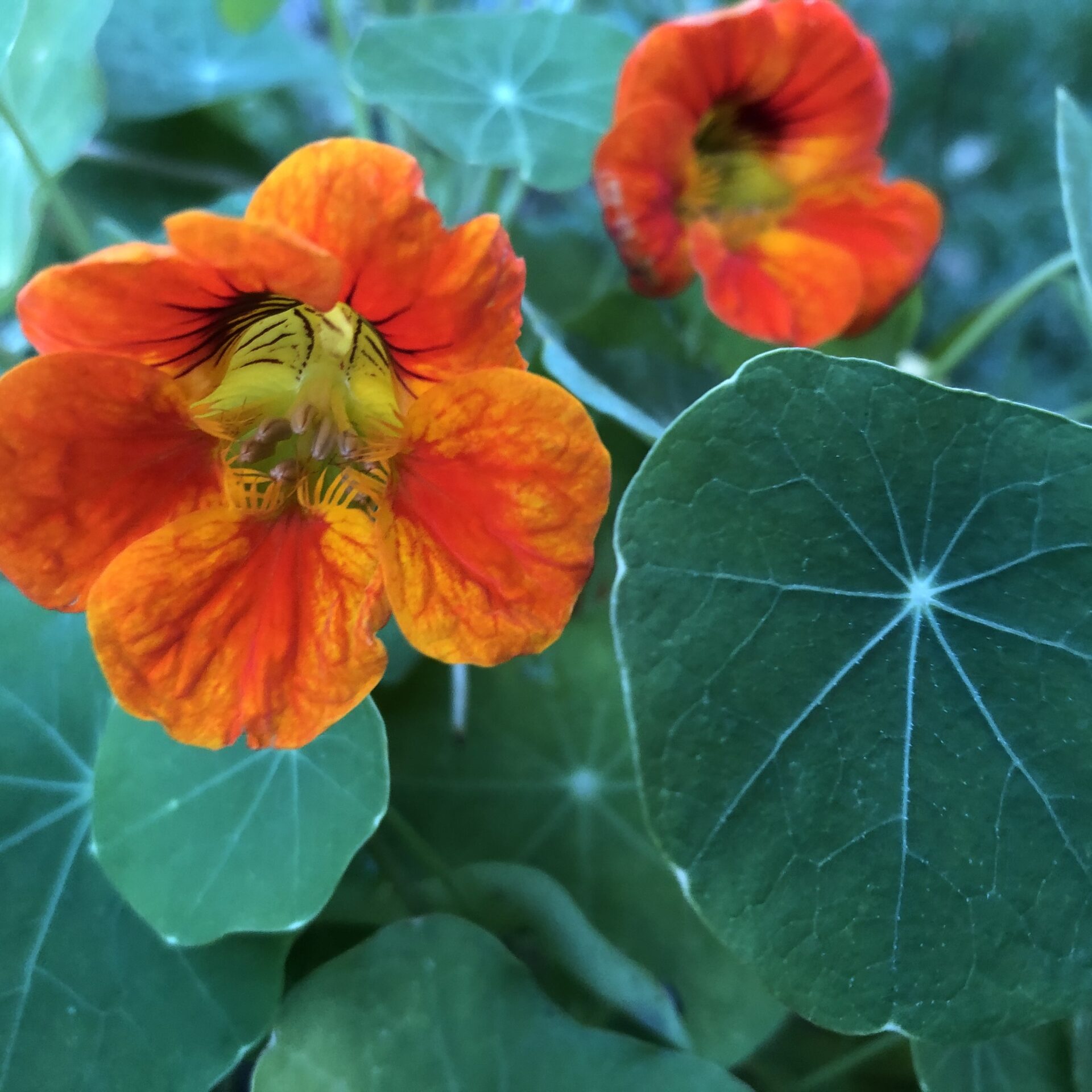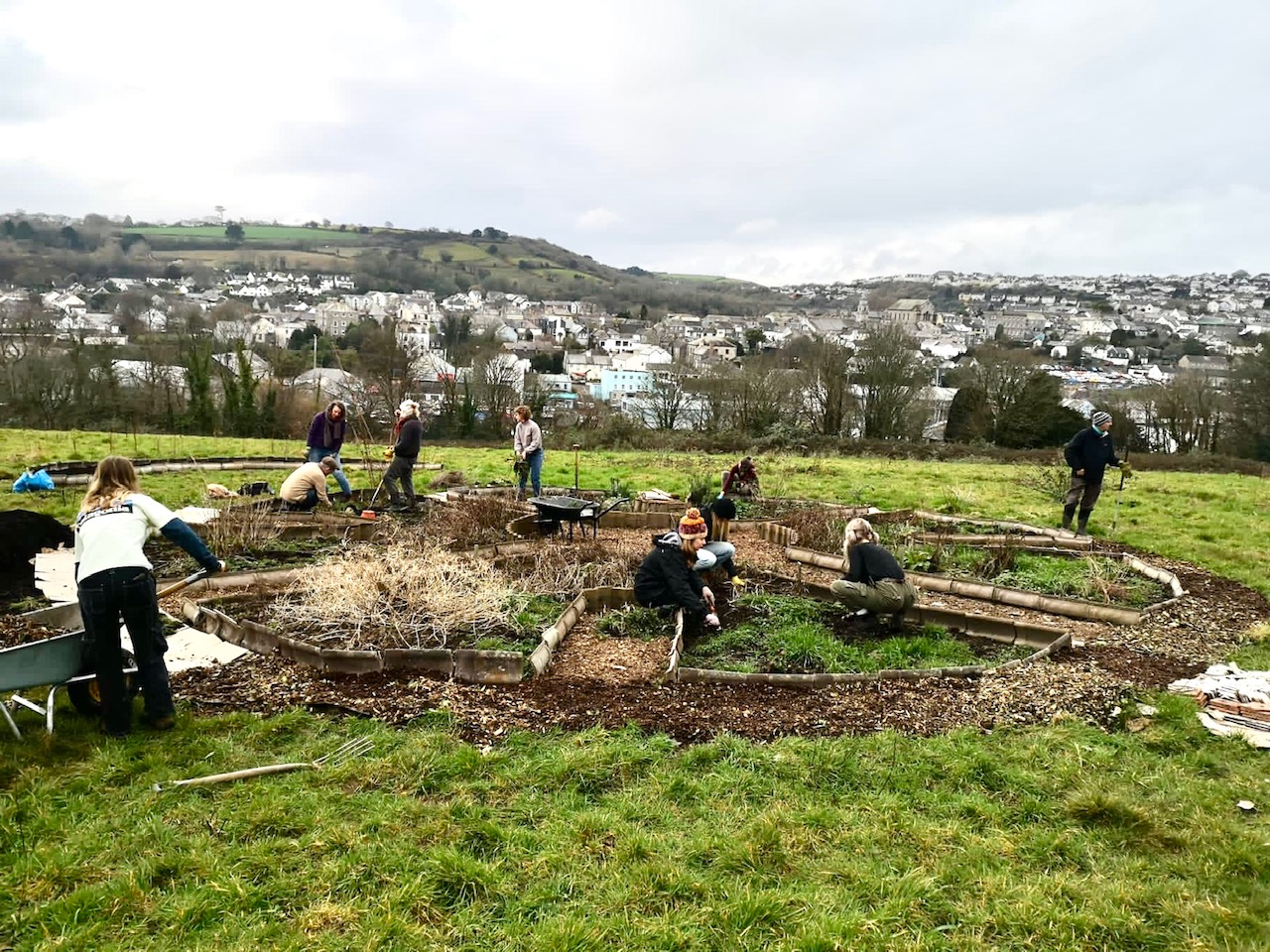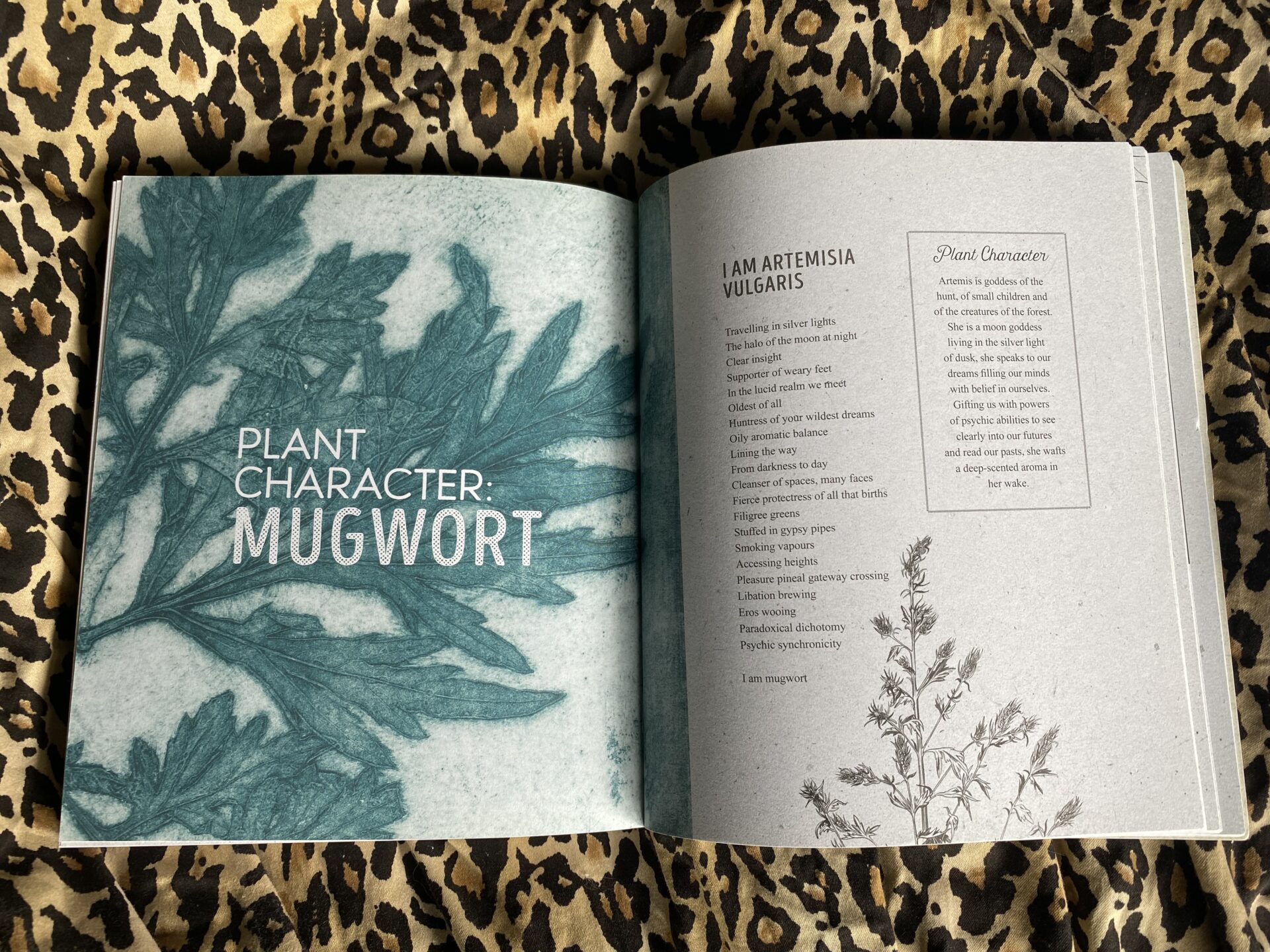Harvesting Herbs for medicine – creating Dried Simple Herbal Teas
Are you interested in growing, gathering, using and storing your own herbal medicines? If you’re new to harvesting herbs for medicine, don’t panic! Knowing the right times and techniques isn’t as difficult as you might think. Here, we look at when and how to harvest herbs, along with identifying them. Plus, we guide you through making your own herbal teas and decoctions.
Checklist for Harvesting Herbs
- Choose a plant you are 100% sure of and can positively ID
- Look for healthy, vibrant plants growing away from sprayed fields or busy roads
- Chose a sunny day
- Consider the phase of the moon
- Harvest with care and awareness:
– harvest where the plant is abundant
– always leave enough plant behind to grow on and produce seeds - Dry your herbs somewhere warm, dark and dry with good airflow
- Store your herbs in glass jars and remember to label them.
Harvesting Plants
When you harvest herbs, it’s great practice to get really focused on what you are doing. Take a few deep breaths to settle your mind and start to observe everything about the herb you’re working with.
Where is it growing?
What is it growing with?
Does it look healthy and vibrant?
And is there enough of it to still leave it to flourish after you have gone?
Leave some lovely bushy healthy plants to grow on and produce seed and only take plants from areas where they are prolific.
Other aspects to consider when harvesting are the weather and the phase of the moon. We prefer the waxing or full moon for arial parts, or those that grow above ground such as leaves or flowers, and the waning or new moon for root harvests.
Anything above the ground is best harvested on dry, sunny days after the mornings dew has evaporated.
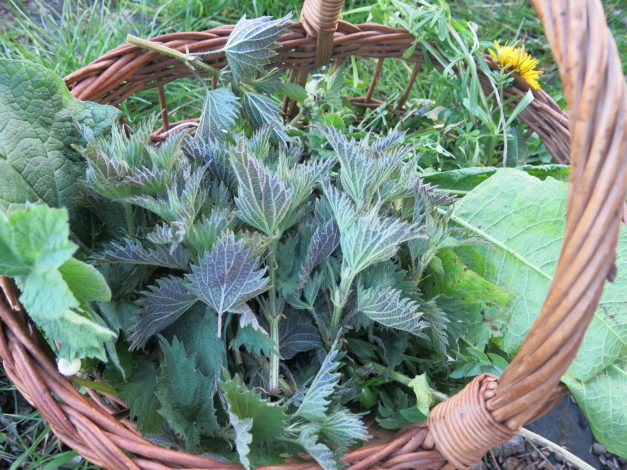
Identification
Learning to properly identify your local herbs and applying them your own health-care is a wonderful empowering skill to cultivate. We all have a direct connection to the natural world, thus creating your own herbal tea blends strengthens that bond whilst supporting you and your community’s health.
We are not called Sensory Solutions for nothing – we work with plants using all our senses and discover new plant friends by carefully observing them and gently getting familiar with their individual traits.
Looking really closely at plants, smelling plants, touching and carefully tasting plants all give us very important clues when we’re identifying plants growing in the wild. When you’re out walking and looking at plants we really encourage you to take your time. Take some deep breaths, leave your worries behind, empty your mind.
Open your eyes to look and your heart to feel, in detail and up close and personal, all the plants in the hedgerows. Pause, look up.
Are there trees above you?
Do you know what their names are?
Are you familiar with some of your local wild flowers and medicinal herbs?
A really important and useful tool to have is a plant key. There are many many books on the subject and we started off by going to the local library and a taking as many as possible out and finding the ones we liked the best.
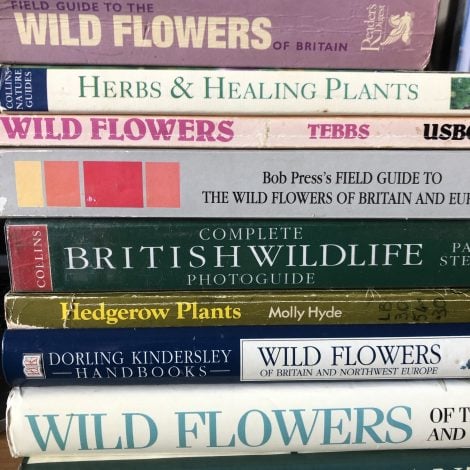
This coupled with our love of charity and second hand book shops led to us now having our own library of plant and wild flower identification books at home on our shelves, or more correctly in our bags, the book table, the bedside table, in constant use….it makes a great bedtime read, perusing over pictures that might give you clues next time you meet a new plant.
The most important thing when you’re pricking plants is that you feel 100% certain that you’ve got the right one.
Infusions and how to make the perfect cup of tea
There’s often a lot of confusion around what is a tea, an infusion and a decoction. Really, these are all ways of extracting constituents from plants using water.
Making a delicious and nourishing tea from dried herbs sounds simple, but the tricky bit is how to get a good cup of loose-leaf herbal tea. In a world where 80 % of the population are thought to use herbs as their primary medicine, we should all know how to make good cup of herbal tea. The word infusion is used to describe both the process of making a tea and the final preparation itself. We pour boiling water on softer plant materials such as leaves and flowers and then steep that for a short while between 10-20 mins to extract volatile oils, and any other easily water soluble components of the plant. If you’re using tougher plant material like bark, roots or seeds, its best to make a decoction.
You’ll notice if you leave your tea steeping for longer or even overnight, you get different compounds from the plant being extracted. Have you ever seen a cup of peppermint tea go black if the herb is left in? A longer steeping period will often extract more of the bitter principles.
You see this very clearly with Calendula, also known as Marigold, which goes very bitter if left for an hour or two. Standard herbal infusion is one teaspoon of herb per cup but you can make them stronger or weaker by changing the ratio of herb to water.
We made a video about treating fevers and making a yarrow infusion here
Herbal Decoctions
When working with roots or barks (harder materials), us herbalists decoct our herbs over infusing them.
A decoction is an herbal preparation created by boiling herbs in liquid, usually water but sometimes we use milk or wine too; we are sequestering the soluble active principles of herbs.
General rule, for a medicinal decoction is to use one teaspoon of dried herb per cup and two teaspoons of fresh herb per cup of water.
Directions:
1. Use one teaspoon of herbs per cup of cold water
2. Add the herbs and cold water to a pot
3. Place that pot on the stove and bring up to a gentle boil
4. Put a lid on the pan and lightly simmer for twenty minutes
5. Remove from the heat and let your decoction cool to drinking temperature
6. Strain out the herbs
You can use these same herbs to brew up a new batch of decoction a couple more times
7. Refrigerate leftovers and use within 48 hours
Kids and Herbs
It is really good to be able to introduce children to growing, picking and drinking herbs at an early age, where it becomes part of daily life and then when herbs are needed because of potential ill health it is much easier to get them to take their medicine as it is more normalised.
Plant connection
Let’s look at 3 easy to ID herbs that can be dried for medicinal teas for your own home dispensaries.
1. Daisy
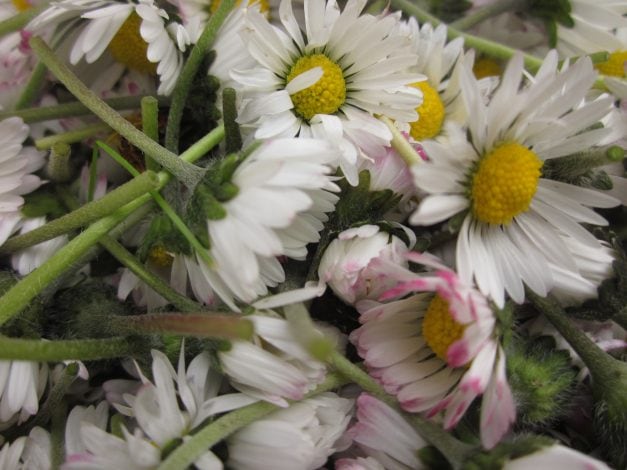
Possibly one of the first flowers you learned to recognise as a child was the daisy. You all know how to make a daisy chain, but did you know that the sweet daisy can support you medicinally? Daisies grow from the early spring right through the Summer and into the Autumn months. And because they are so familiar and easy to recognise, it’s a great one to harvest for drying out for teas.
Dais – y – the day’s eye. They are such a bright, herb following the path of the sun. Daisy’s open up to the sunshine and are beautiful in teas as when they hit hot water they open up too.
Have you ever eaten a daisy?
They taste a bit sour like soap. This gives us a clue to what we might use daisy for. Daisy’s are full of a plant compound we call saponins. Saponins are the chemicals in the plant that cause the soapy flavour.
Daisy flowers are lovely to harvest, dry & storage for later use.
2. Elder tree
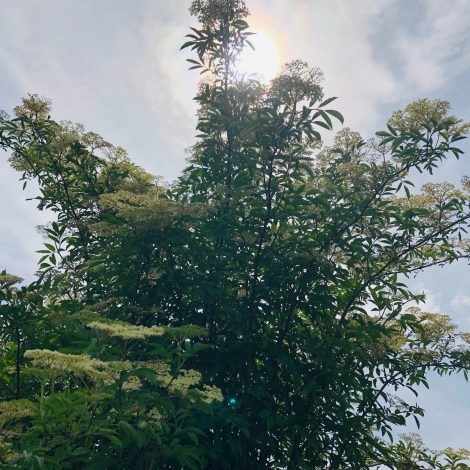
The fabulous and prolific Elder tree is coming into flower right now and the May Full moon is a perfect time to go out and harvest the delicate creamy blooms.
Elderflowers are normally ready to go out and get around late May to mid-June here in the UK. They’re best and at their most optimum picked when the multiple buds are freshly open on a warm, dry, sunny day near the Full Moon.
Give them a shake as loads of insects will be busy in the flowers – you can leave them out on some newspaper to let all the bugs walk or fly off. Here is a link to a delicious cordial
If the flowers are not harvested and left on the tree, they will turn into absolutely wonderful dark purple berries around late summer, these berries must be cooked to deactivate the cyanidin glycoside, phytochemical which can make people quite ill. Here is a link to our Elderberry Decoction blog post
3. Dandelion Leaves and Root
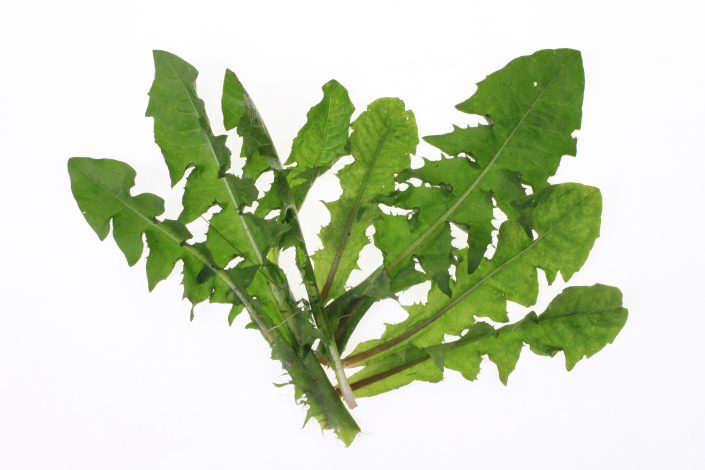
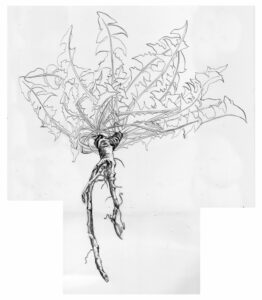
Illustration by Belle Benfield
Dandelion – Dent-de-Leon in French – lion’s teeth named for their serrated leaves. Dandelion is another plant familiar to us all as children when we would blow the dandelion clock, spreading its seeds across the lawn. We use the leaves and the roots of dandelion as medicines depending on what organs we are looking to support or disease we are looking to shift.
Another French name for Dandelion is pis-en-lit which means bed-wetter. This refers to the fact that dandelion leaves are what we call a diuretic which means that they help the body to release water as urine. Releasing excess water from the body can help cleanse our kidneys, reduce blood pressure and clear our bladders and urinary tract. So you can imagine dandelion can be useful for cystitis, hypertension, kidney stones.
Ever tasted a dandelion leaf?
Give it a go and you’ll find they are very bitter.
Bitter plants are super useful to the body because they help us produce bile in our livers. This bile is what we need to digest our food. So eating plants that help to produce bile is supportive to our liver, gall bladder and pancreas, taking some of the strain of digestion
Dandelion root is a wonderful herb for any digestive discomfort. We generally dig the roots up on a dark or new moon either in very early spring or over the winter months.
How to dry herbs correctly
You will need some where warm, dark and dry with good airflow for the best quick drying method. If the herb allows for it, you can create bunches to hang and dry or just place the herb on newspaper on a tray – we use old mushroom trays that have holes in the base and stack really well – it is our preferred and tried and tested method.
Don’t stop reading yet…!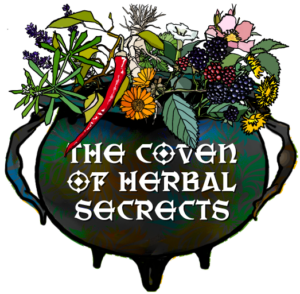
If you want to know the more about Harvesting Herbs for Medicine why not join our Coven? You’ll soon have access to our best resources while increasing your confidence and knowledge about the magic of herbs and master the art of herbal remedy creation, spells and rites, plus step by step guides to getting to know your plants better.


